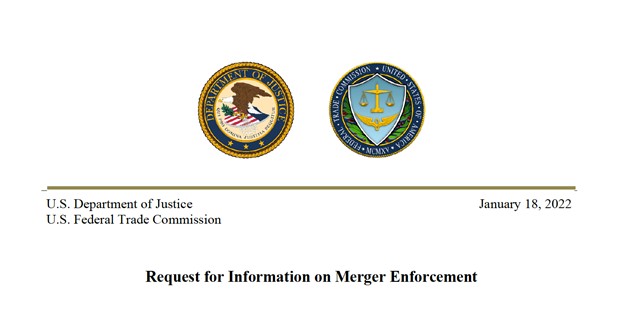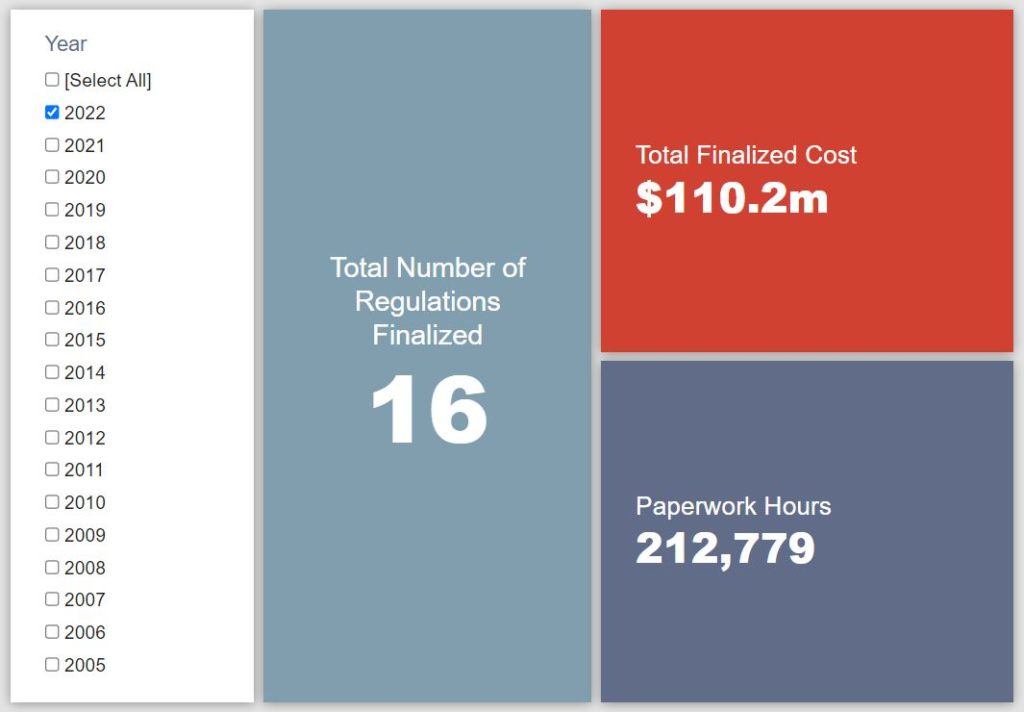Week in Regulation
January 24, 2022
Mid-January Chill Continues
For the second straight week, there was little to write home about in the pages of the Federal Register. There were 11 rulemakings with some measurable economic impact, but most were routine airworthiness directives and no action exceeded $8 million in either costs or savings. Perhaps the most interesting rule from a substantive standpoint was a Department of Transportation (DOT) rule that makes a nominally deregulatory adjustment to vision standards for truck drivers. Across all rulemakings, agencies published $11 million in total net costs but cut 998 annual paperwork burden hours.
REGULATORY TOPLINES
- Proposed Rules: 29
- Final Rules: 58
- 2022 Total Pages: 3,413
- 2022 Final Rule Costs: $110.2 million
- 2022 Proposed Rule Costs: -$428.5 million
NOTABLE REGULATORY ACTIONS
The most noteworthy rule of the week was DOT’s final rule on “Qualifications of Drivers; Vision Standard.” Under current standards, prospective commercial motor vehicle (CMV) drivers that do not meet the established threshold of visual acuity would have to actively apply for an exemption. This rule adjusts that threshold to essentially grant automatic DOT approval to relevant CMV drivers. The agency estimates that this would only affect “less than 0.1 percent” of the nationwide pool of drivers. DOT estimates the modest administrative savings from these adjustments to be roughly $1.6 million annually. Interestingly, this rule represents the Biden Administration finalizing a proposed rule put forward in the waning days of the Trump Administration that was explicitly designated as part of Trump’s deregulatory agenda.
TRACKING THE ADMINISTRATIONS
As we have already seen from executive orders and memos, the Biden Administration will surely provide plenty of contrasts with the Trump Administration on the regulatory front. And while there is a general expectation that the new administration will seek to broadly restore Obama-esque regulatory actions, there will also be areas where it charts its own course. Since the American Action Forum (AAF) RegRodeo data extend back to 2005, it is possible to provide weekly updates on how the top-level trends of President Biden’s regulatory record track with those of his two most recent predecessors. The following table provides the cumulative totals of final rules containing some quantified economic impact from each administration through this point in their respective terms.
![]()
Given the paucity of action in the week overall, there was not much movement in the Biden Administration’s overall regulatory totals. Last week, however, marked one full year of President Biden’s term. AAF provided a detailed analysis of how Biden’s first year of regulatory actions compared to Trump and Obama’s here. The most notable shift across the three administrations in the final week of their respective first years came from the Obama Administration. The final “Year One” Obama cost total spiked by nearly $24 billion, thanks primarily to a DOT train safety rule from January 15, 2010.
THIS WEEK’S REGULATORY PICTURE
This week, a review of merger enforcement.

On January 18, the Federal Trade Commission (FTC) and the Antitrust Division of the Department of Justice announced the start of a public comment period with the goal of gathering input on how the agencies can “modernize enforcement” of potential corporate mergers. The 10-page Request for Information (RFI) contains 165 questions across 15 broad areas pertaining to the agencies’ guidelines for reviewing horizontal and vertical mergers. While the guidelines are non-binding for the judiciary, courts often cite the guidelines in their rulings.
Some of the key questions include whether the agencies should put more emphasis on “nonprice effects” in evaluating mergers, how changes in the modern economy affect the ability of firms to “engage in harmful tacit coordination,” and what aspects of workers’ terms and conditions beyond wages, salaries, and other compensation should be considered.
The announcement comes after last July’s Executive Order on Promoting Competition in the American Economy, which directed the agencies to conduct a review of mergers.
FTC Chairwoman Lina Khan, an ardent proponent of increased scrutiny of merger reviews, said in a statement that “the current merger boom has delivered massive fees for investment banks” and that as a result consumers have “lost out, with diminished opportunity, higher prices, lower wages, and lagging innovation.”
Others on the FTC were more skeptical. Commissioners Noah Phillips and Christine Wilson issued a separate statement welcoming the review of the guidelines to help better define newer market realities but cautioning that the current guidelines are persuasive for the judiciary because they represent decades of the agencies’ experience analyzing mergers and court decisions.
The public comment period on the RFI runs through March 21.
TOTAL BURDENS
Since January 1, the federal government has published $318.3 million in total net cost savings (with $110.2 million in new costs from finalized rules) and 313,950 hours of net annual paperwork burden increases (with 212,779 hours in increases from final rules).












